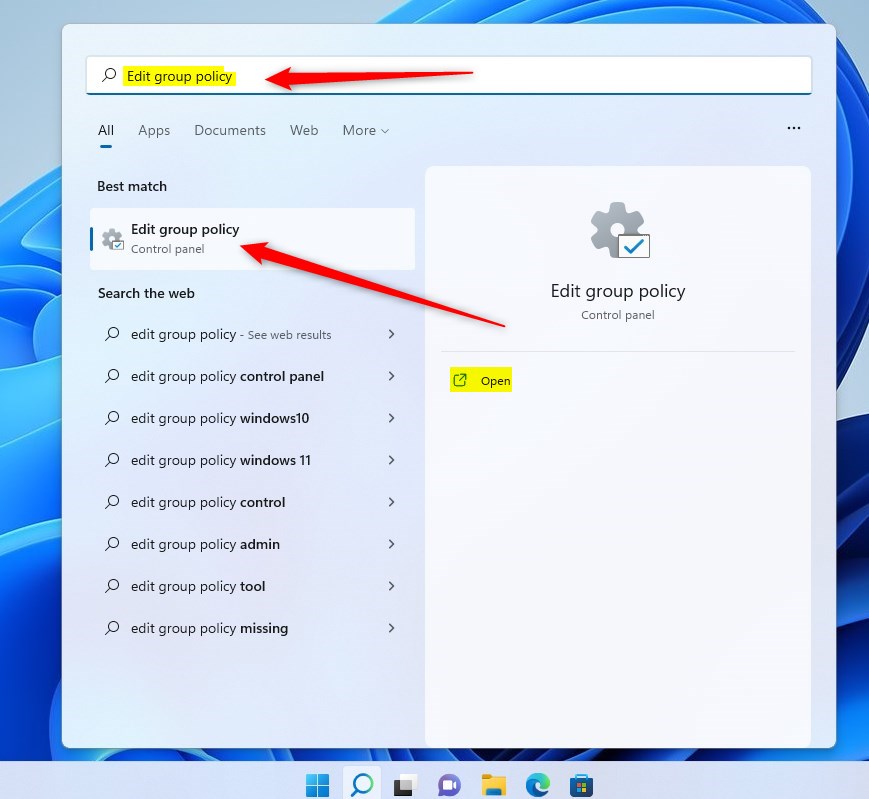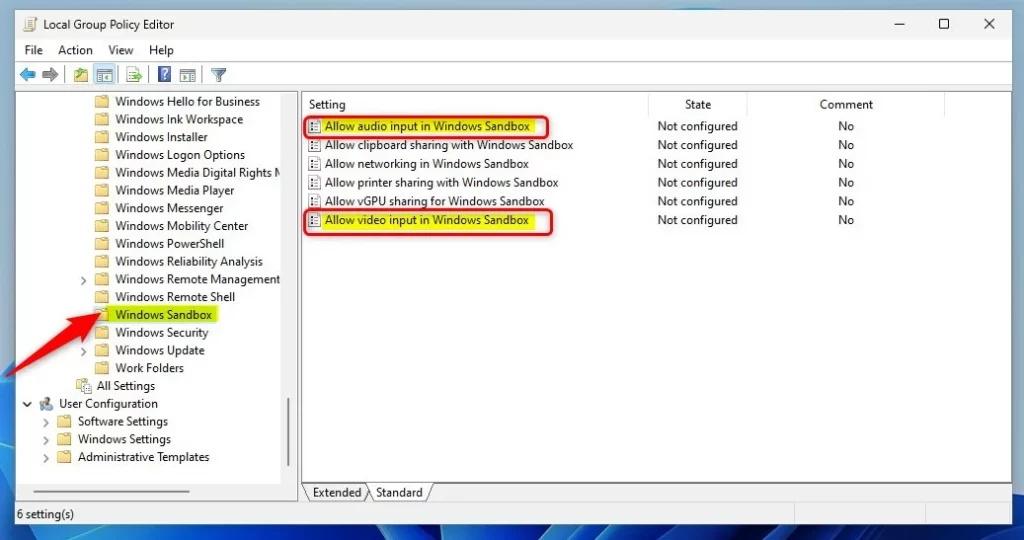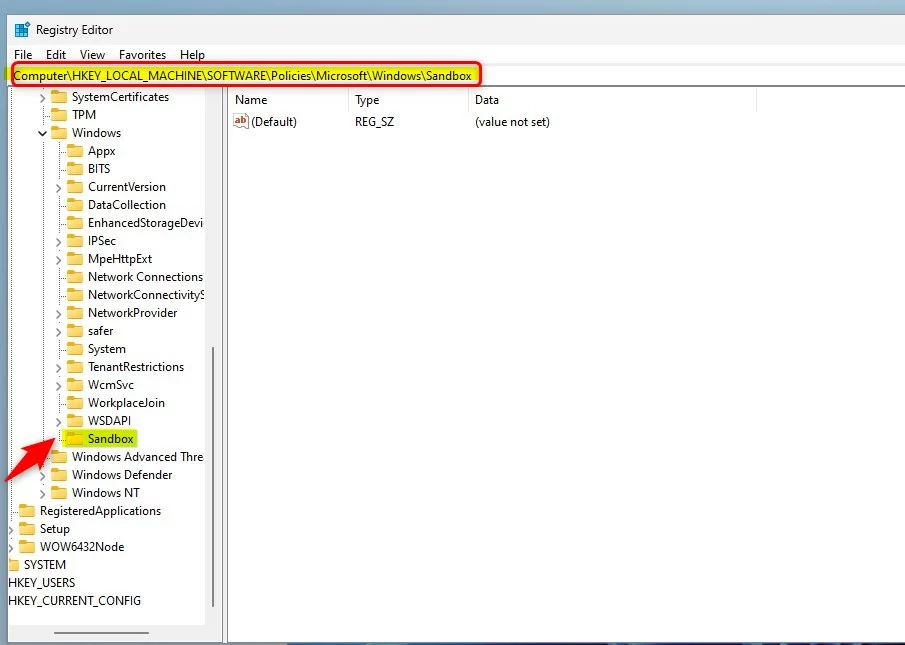This article describes steps to turn on or off audio (ex: microphone) and video (ex: camera) input from the host into the Sandbox in Windows 11.
When you turn on Sandbox in Windows 11, you enable a lightweight, isolated desktop environment to run applications safely. The sandbox environment is completely isolated, remains “sandboxed,” and runs separately from the host machine.
By default, audio (ex: microphone) and video (ex: camera) input from the host to the Windows Sandbox are not permitted. However, if you need to use a microphone or camera within the sandboxed environment, you must allow audio and video input.
Below is how to do that in Windows 11.
How to turn on or off audio and video input between host and Sandbox in Windows 11
As described above, by default, audio (ex: microphone) and video (ex: camera) input from the host to the Windows Sandbox are not permitted. If you need to use a microphone or camera within the sandboxed environment, you must allow audio and video input.
Below is how to enable or disable these features in Windows 11.
First, open Local Group Policy Editor by clicking on the Start Menu and searching for Edit group policy, as highlighted below.
Under Best match, select Edit group policy to launch Local Group Policy Editor.

In the left pane of Local Group Policy Editor, expand the tree:
Computer Configuration > Administrative Templates > Windows Components > Windows Sandbox
Then, in the Windows Sandbox details pane on the right, locate and double-click the settings that say “Allow audio input Windows Sandbox” and “Allow video input in Windows Sandbox.”

On the Allow audio input in Windows Sandbox and Allow video input in Windows Sandbox windows, set the option to Not Configure, Enabled, or Disabled.
- Not Configured (default)
- Enabled – Windows Sandbox will receive audio and video input from the user on the host.
- Disabled – Windows Sandbox will not be able to receive audio and video input from the host.

Enable or disable audio and video input with Sandbox via Windows Registry
If you can’t open the Local Group Policy Editor, you can use the Windows Registry instead.
Open the Windows Registry, and navigate to the folder key path as listed below.
HKEY_LOCAL_MACHINE\SOFTWARE\Policies\Microsoft\Windows\Sandbox

If you don’t see the Sandbox folder key, right-click on the Windows key, then create a subfolder key called Sandbox.
Right-click on the Sandbox folder key’s right pane and select New -> DWORD (32-bit) Value. Next, type a new key named AllowAudioInput and AllowVideoInput.
Double-click the new keys and enter the Value data as 1 to enable audio and video between the host and the sandbox environment.
A 0-value data or simply deleting the key will disable audio and video input between the host and the sandbox environment.

That should do it!
Reference:
Conclusion:
- Enabling audio and video input from the host to the sandbox environment in Windows 11 allows for a more versatile and comprehensive user experience within the isolated environment.
- The process involves utilizing the Local Group Policy Editor or the Windows Registry to configure the settings based on specific requirements.
- Following the outlined steps, users can seamlessly activate or deactivate audio and video input between the host and the Windows Sandbox in Windows 11, thus enhancing their sandbox experience.

Leave a Reply